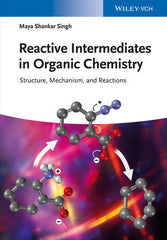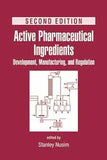Reactive Intermediates in Organic Chemistry: Structure, Mechanism, and Reactions By Maya Shankar Singh
Reactive Intermediates in Organic Chemistry: Structure, Mechanism, and Reactions296 pages
March 2014
|
Most reactions in organic chemistry do not proceed in a single step but rather take several steps to yield the desired product. In the course of these multi-step reaction sequences, short-lived intermediates can be generated that quickly convert into other intermediates, reactants, products or side products. As these intermediates are highly reactive, they cannot usually be isolated, but their existence and structure can be proved by theoretical and experimental methods. Using the information obtained, researchers can better understand the underlying reaction mechanism of a certain organic transformation and thus develop novel strategies for efficient organic synthesis.
The chapters are clearly structured and are arranged according to the type of intermediate, providing information on the formation, characterization, stereochemistry, stability, and reactivity of the intermediates. Additionally, representative examples and a problem section with different levels of difficulty are included for self-testing the newly acquired knowledge.
By providing a deeper understanding of the underlying concepts, this is a musthave reference for PhD and Master Students in organic chemistry, as well as a valuable source of information for chemists in academia and industry working in the field. It is also ideal as primary or supplementary reading for courses on organic chemistry, physical organic chemistry or analytical chemistry.
The chapters are clearly structured and are arranged according to the type of intermediate, providing information on the formation, characterization, stereochemistry, stability, and reactivity of the intermediates. Additionally, representative examples and a problem section with different levels of difficulty are included for self-testing the newly acquired knowledge.
By providing a deeper understanding of the underlying concepts, this is a musthave reference for PhD and Master Students in organic chemistry, as well as a valuable source of information for chemists in academia and industry working in the field. It is also ideal as primary or supplementary reading for courses on organic chemistry, physical organic chemistry or analytical chemistry.


















